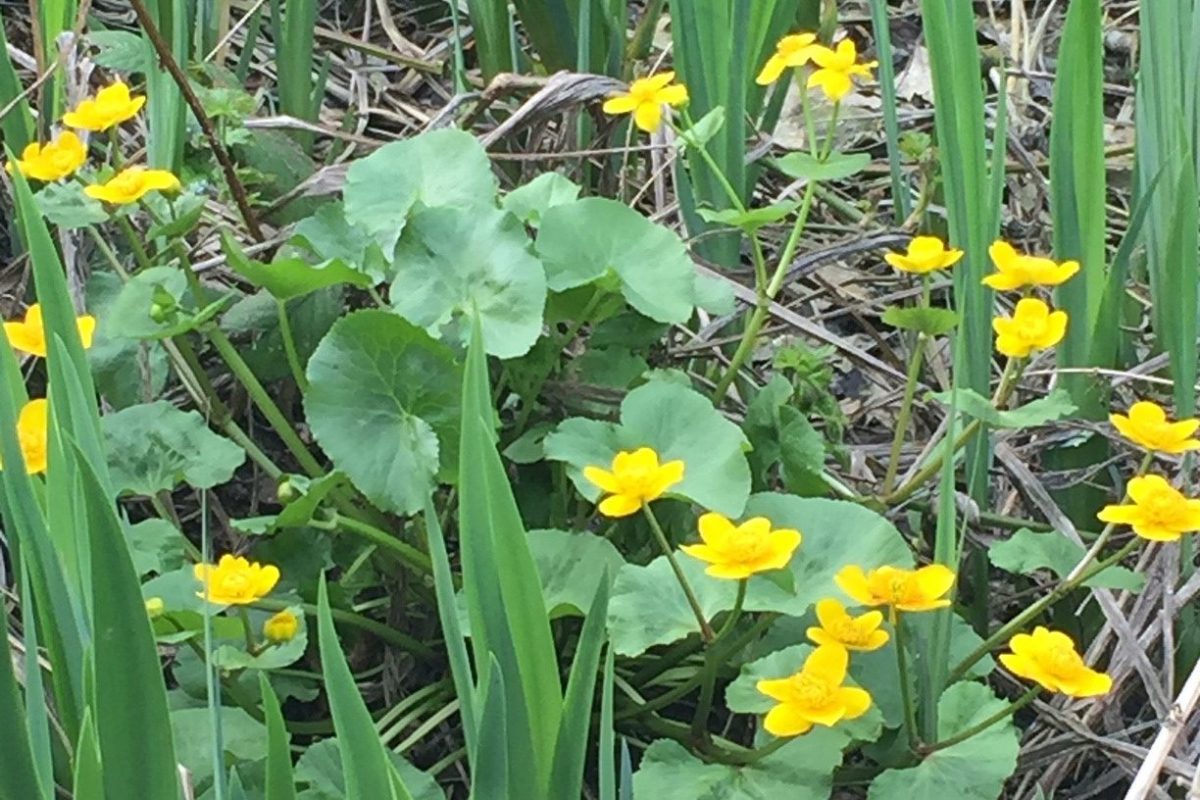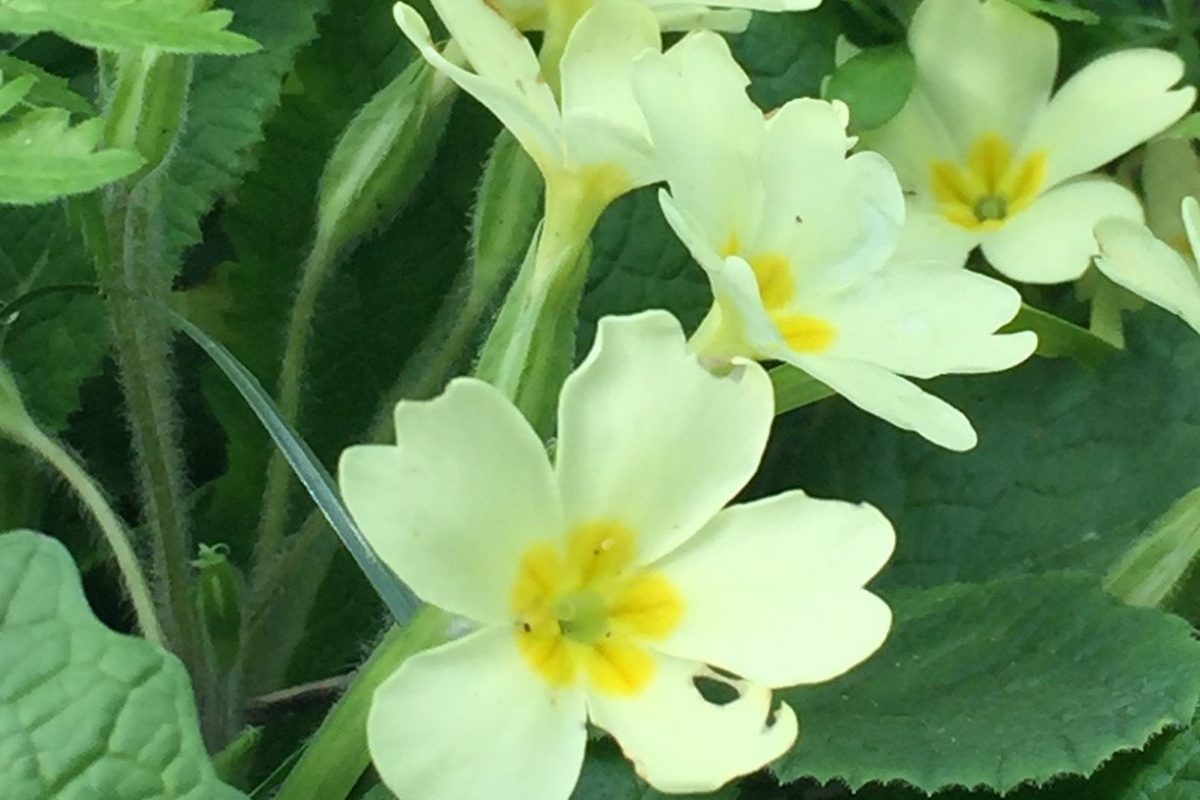Spring is a good time to go birdwatching in woodland, and on the Nature Trail. Birds are active, building nests and defending territories, and the leaves, being not yet fully unfurled, do not hide our feathered friends as they do in summer.
Although this is true, I think that when doing any sort of birdwatching in woods, vision is less important than hearing. I nearly always hear birds before I see them, whether leaves are on the trees or not. Many of us though, are surprisingly inept at knowing which bird makes which noise.
The Nature Trail is a good place to learn, as there are relatively few species, and it is also home to some of the UK’s very best singers. No, I don’t mean Adele! This blog is devoted to the wonderful soundtrack to the South London spring; bird song.
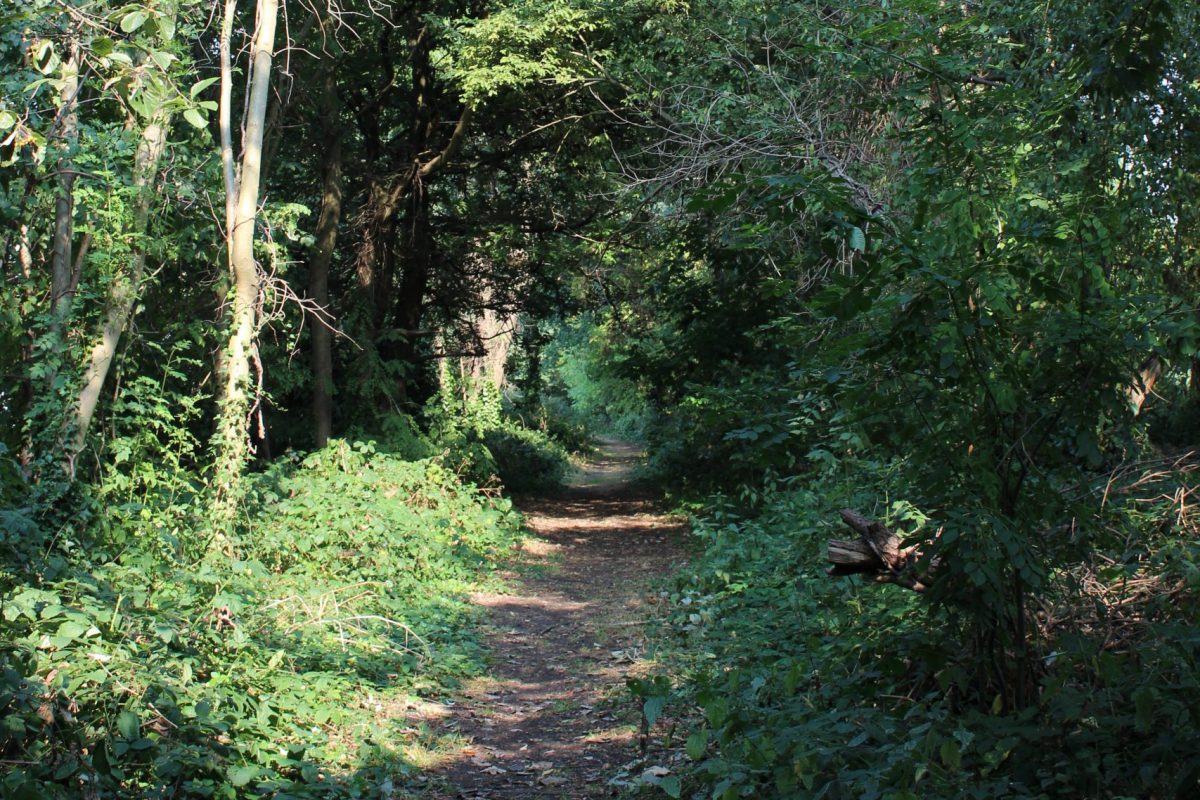
The noises which birds make can be divided into two types. First, the call, which is a short noise to either alert other birds to danger, or to keep in touch with other birds in a flock or group. If you watch the little groups of blue tits and long-tailed tits who are always in the wood, you will hear their near-constant chattery calls.
Songs are longer than calls, sometimes going on for hours. If you hear a song it will be the male who is singing, to tell other birds ‘this is my territory’. He is singing to preserve his little patch from competition.

Birdsong starts in winter. Robins sing all the way through the cold season, although their winter song is less complex than the full richness of their peak spring sound. Since early February, we have had a song thrush singing from our neighbour’s garden. If I wake at 2am or 3am I can hear him outside, the tones are beautifully clear in the morning silence. It is in spring though, when everyone’s song really gets going.
Here are some of the common songs you will hear on the Nature Trail. Morning, as early as you can make it, is the best time to hear them.
Blackbird
One of the most melodic songs; fluty, deep, rich and slow, with pauses. In the words of Geoffrey Grigson, author of the Shell Country Book (1962),
Bold and deliberate… mellow… with the quality of a flute; a structure of sluicing sound delivered as if there were all the time in the world for singing, sliding through its full phrases, then dwindling off a little weakly.
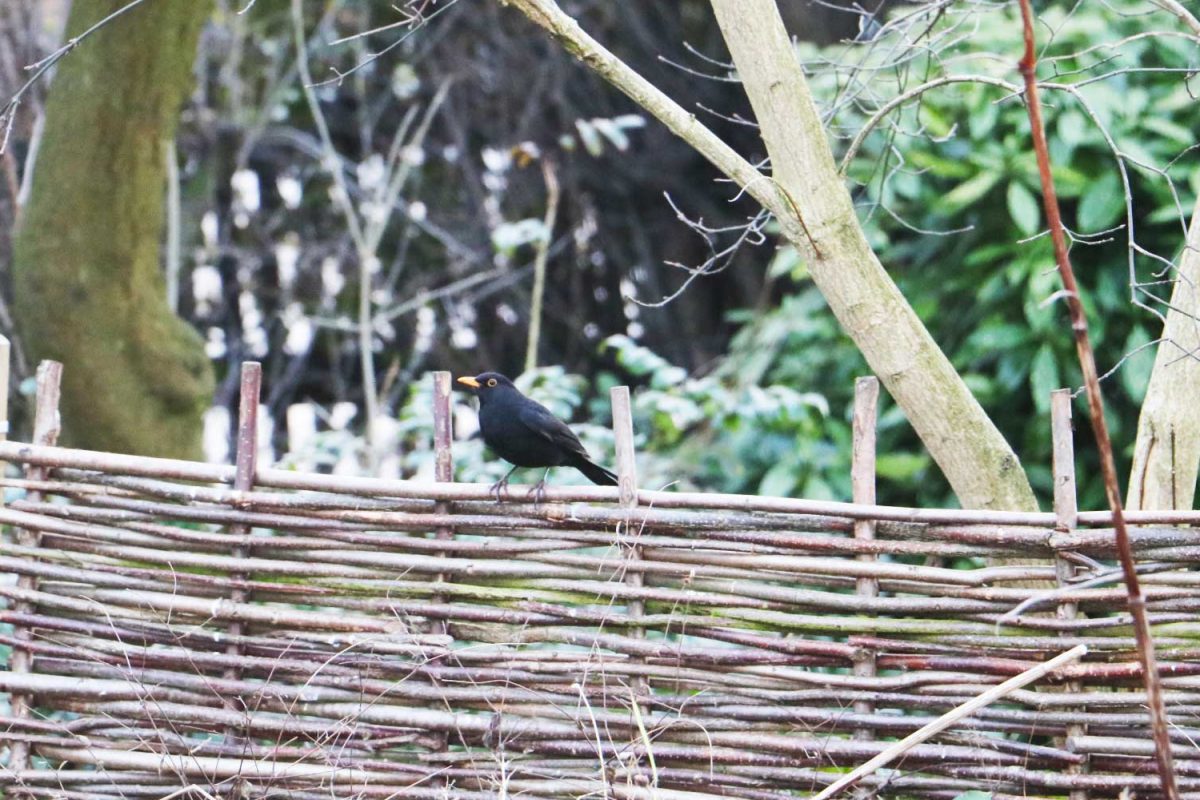
Song Thrush
A similar tone to blackbird: rich, and loud. The key feature is the repetitive nature of the singing. You will hear a short phrase of two or three notes, and this will be repeated a few times before moving on to the next phrase. Song thrushes are declining in the UK, but there are a few in the Nature Trail and in the Horniman Gardens.
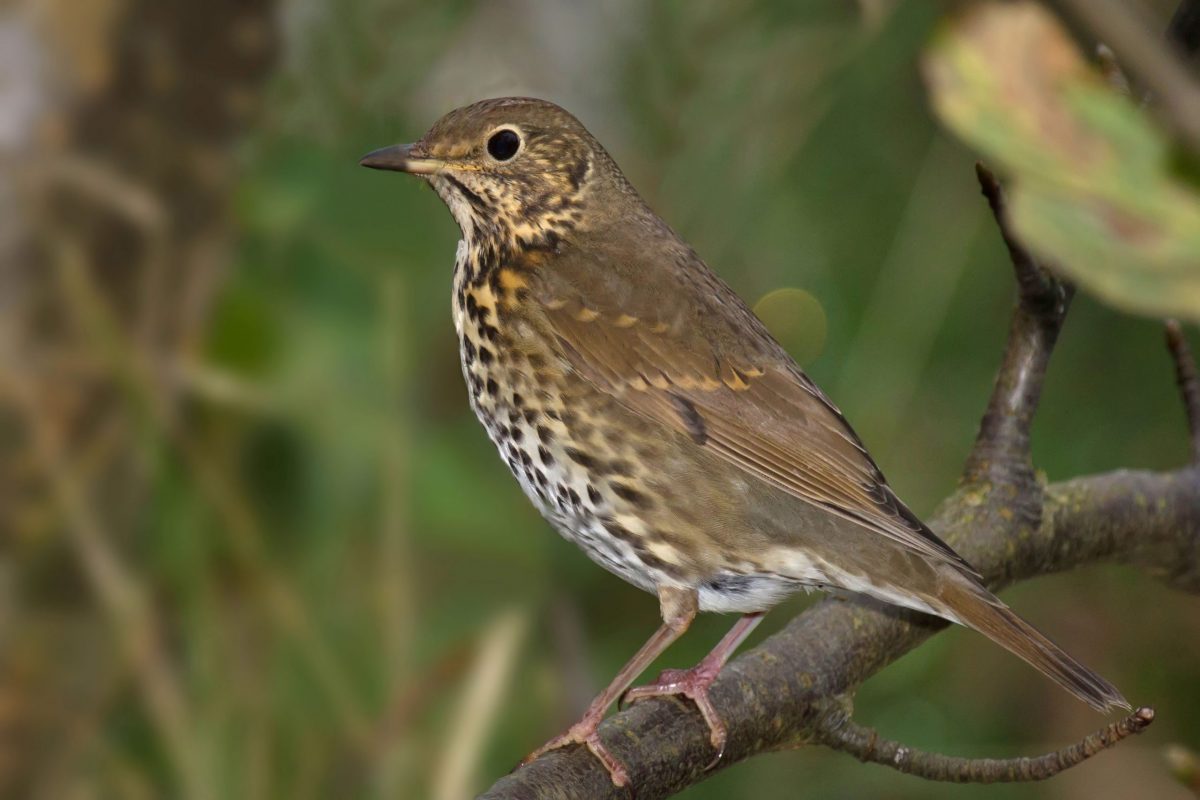
Robin
A good one to get familiar with, as robin – a territorial aggressive little fellow – sings throughout the year. His song is tinkling, gentle, and higher pitched than the blackbird but also very melodic. Grigson says the robin’s song is,
…thin, reedy, melancholy, to my ear a rather disturbing music….
Melancholy yes, but disturbing? Listen and make up your own mind.
Woodpigeon
The woodpigeon sings a low cooing ‘pigeon-sounding’ song; a five-note low pitched repeated phrase. Someone once told me it sounds like the bird is singing, ‘I am a woodpigeon’. It would do, I suppose, if that phrase had five syllables.
So perhaps he is just singing, ‘I am a pigeon’. The emphasis is often on the second and fourth syllables. ‘I am a pigeon.’
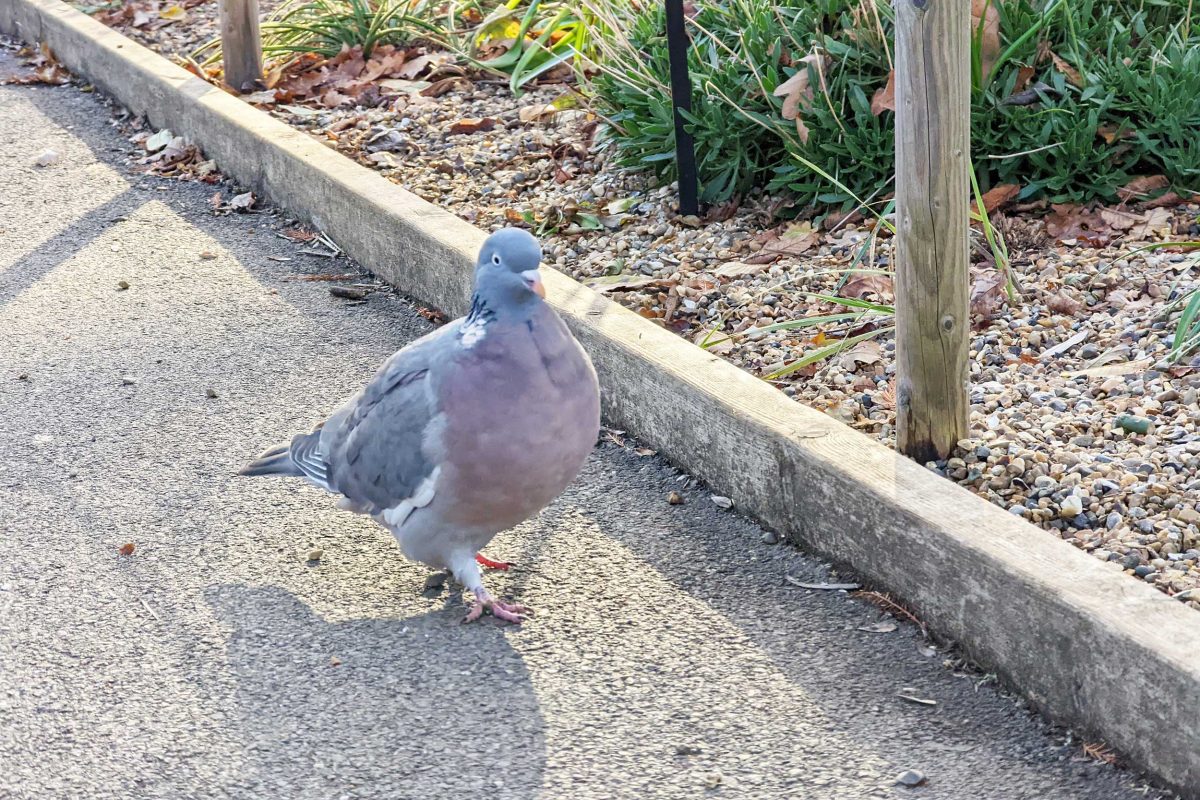
Collared Dove
Although we don’t get them on the Trail, the collared dove is very common in the outer London suburbs and has a not dissimilar song. Collared dove’s song consists of three notes and is higher-pitched than that of woodpigeon.
On one of the excellent ‘Bird Song Basics’ videos on the British Trust for Ornithology (BTO)’s YouTube channel, the presenter says the collared dove sounds like a bored football supporter chanting, ‘United, United, United.’
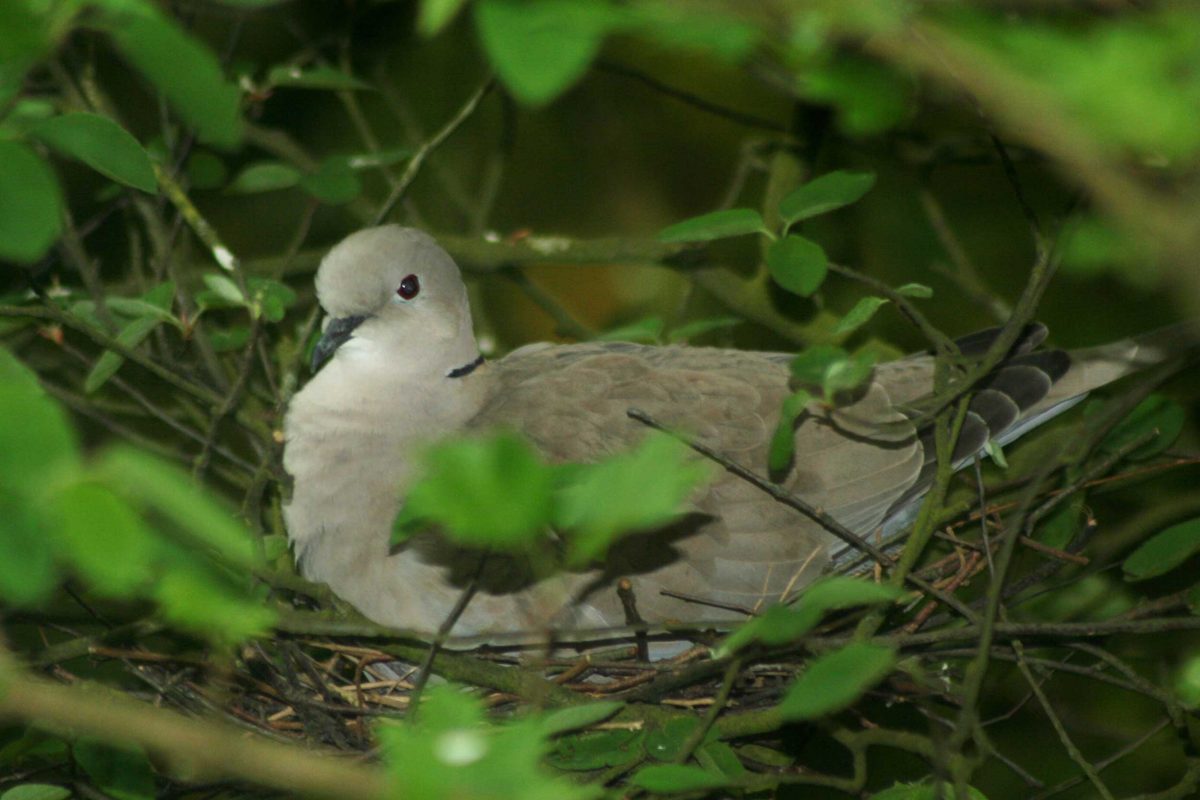
Stock Dove
This pretty little dove, like a dainty woodpigeon with darker eyes, is far more often heard than seen. The stock dove makes a one-note ‘whoo’ call, which has that pigeon-y sound to it.
So remember, for pigeons and doves: one note is a stock dove, three is a collared dove and five a woodpigeon.

Blackcap
This is one of the most gorgeous sounds on the Nature Trail. The blackcap’s song is varied and beautiful. It tends to start off with scratchy notes, before blackcap gets into his stride and builds to a crescendo of fluty clear tones. The song often finishes abruptly.
It can be very tricky to distinguish the song of a blackcap from that of a garden warbler. In fact, I would say it is impossible. I have seen no garden warblers on the Trail and I have set eyes on many blackcaps singing, so I assume all the songs I hear are those of blackcaps. For those of you who want to know, the garden warblers’ song is supposed to be less varied with slightly fewer ups and downs, and less structure – more like a constant babbling brook. Supposedly.

Wren
Wren is much easier! Fast, frenetic, trilling, a busybody type of song. Fits the busy little wren perfectly. Surprisingly loud for such a tiny bird. As Grigson says,
…voluminous, seeming to burst with astonishing abandon and cheerfulness out of so small a bird.
That’s enough for now. You cannot learn bird song by reading descriptions of it. Watch and listen to those BTO videos of these few species, as its good to hear the description and then listen to the song.
Once you’ve listened to the songs of a few common species, go out into your local park or the trail one spring morning and listen. When you’ve mastered the songs above, great tit, blue tit, dunnock and goldfinch are good ones to do next.
Which is your favourite song? Mine is the willow warbler. The willow warbler’s song sounds like the English summer, brief, beautiful, but rather melancholy. I haven’t heard one on the Nature Trail but they are around in South London so listen out. Once in my life, just once, I heard a nightingale near Flatford Mill in Essex. That was fantastic too.
Learning songs of birds is hard. There are some I can never get to grips with, I have a mental block about the calls of long tailed tits and goldcrest, even though when I listen to recordings I can hear the difference. As for garden warbler and blackcap – forget it! But it’s worth it, it really is.
Resources to help you learn bird song
- The British Trust for Ornithology have made a series of videos on bird identification (available through their website and on YouTube) which include recordings of their calls. These are reliable, pragmatic and highly recommended.
- Xeno-canto.org is an amazing website where people share bird calls and song from all over the world.
- RSPB has a bird call identifier.
- My most-used nature app is the Chirp! App (Bird Songs of UK and Europe) Spiny Software Ltd. This is designed to help you learn birdsong. It is also very good for confirming your ID, if you have a rough idea of what the bird you heard was, or of you are able to narrow it down to two or three species. For example, if you hear something singing a continuous song in the reedbeds and you know it’s either a reed warbler or sedge warbler, you can listen to these two and decide which it was. The app won’t identify the song for you, though there is a sister App, ChirpOMatic, which will do that, although I haven’t used it, so I can’t recommend it.
- For those of you who prefer CDs, there’s a set of two discs from the British Library of Wild Sounds which covers 175 species:
– Kettle, R & Ranft, R (eds). British Bird Sounds on CD. British Library of Wild Sounds/National Sound Archive.
…and an RSPB Guide to Birdsong which comes as a book and accompanying CD:
– Thomas, A. RSPB Guide to Birdsong. Bloomsbury, London, 2019.
But most importantly, get out there and listen.
For those of you who prefer flowers to birds, here’s a couple of spring beauties who are bringing a bit of welcome colour to the winter mud of the Nature Trail.
First pictured, primroses (Primula vulgaris) and lastly the Kingcup or Marsh Marigold (Caltha palustris) growing in the marshy area next to the pond.
Enjoy the Nature Trail this spring!
